 Oceanic Submersibles: Balilla, D. Millelire, A. Sciesa, E. Toti (1926-29)
Oceanic Submersibles: Balilla, D. Millelire, A. Sciesa, E. Toti (1926-29)WW2 Italian Submarines
Balilla class (1927) | Ettore Fieramosca (1929) | Archimede class (1933) | Glauco class (1935) | Pietro Micca (1935) | Calvi class (1935) | Foca class (1937) | Marcello class (1938) | Brin class (1939) | Liuzzi class (1939) | Marconi class (1940) | Cagni class (1940) | Romolo class (1943)Mameli class (1926) | Pisani class (1928) | Bandiera class (1929) | Squalo class (1930) | Bragadin class (1929) | Settembrini class (1930) | Argonauta class (1931) | Sirena class (1933) | Argo class (1936) | Perla class (1936) | Adua class (1936) | Acciaio class (1941) | Flutto class (1942)
CM class (1943) | CC class (Laid down) | CA class (1942) | CB class (1942)
Laid down in 1925 and completed in 1928 (Sciesa 1929), these boats were designed by their builders to meet a Navy request for a cruiser submarine capable of operating in the Red Sea and Indian Ocean from Italy’s African colonies, necessitating a high endurance and reasonable surface speed; U-120, a German UE-II type transferred to Italy at the end of World War I, provided the basis for the design. The result was a double-hulled boat which, for the time, was very strongly constructed, allowing a maximum diving depth of 350ft (Millelire actually reached 400ft on trials in May 1930). The class had a number of other innovatory features including an auxiliary Fiat diesel of 425hp for economic cruising at 7kts, giving a range of 13,000nm, and for battery recharging. This feature was not repeated in later vessels and one assumes it was either a failure or took up too much space.
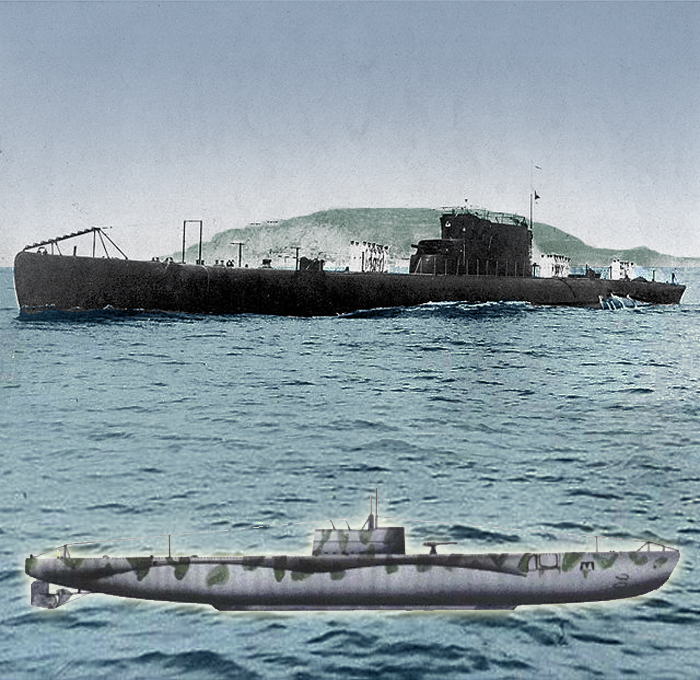
Stability was rather poor and the designed speed of 17.5kts/8.9kts was not realised in the completed boats. The torpedoes comprised 2 reloads for each bow tube and 1 for each stern tube, and all boats except Sciesa carried 4 mines. The original 120mm gun was carried ina shielded mounting in the forward section of the conning tower but in 1934 this was replaced by a ]20mm/45 deck gun. The boats carried out a few offensive patrols during 1940-4] (Toti sank the British submarine Rainbow 15.10.40) but they were too big to operate effectively in the Mediterranean and Balilla and Millelire were laid up while the remaining pair operated as supply submarines to North Africa. Sciesa was damaged by US aircraft on 6.9.42, beached at Tobruk and scuttled two months later.
Design of the class
The Balilla class were the first submarines to be built for the Italian navy following the end of World War I, planned as large ocean-going cruiser submarines to roam the Indian Ocean from East African colonies. They were double-hulled and derived from the German Type UE II U-boats notably U-120 supplied to the Italians as a war reparation. For the first time a 425 horsepower (317 kW) auxiliary diesel engine was also installed as extra generator. Later a derivative design was produced for Brazil, Humaytá, on the modified design.
Hull and general design
The Balilla class displaced 1,427 tons surfaced, 1,874 tons submerged for 86.5 m (283 ft 10 in) long on a 7.8 m (25 ft 7 in) beam and draught of 4.7 m (15 ft 5 in). They became the largest Italian submarines ever built, but were considered to have poor stability. With their strong double-hull using a hardened steel already explored for the Pierto Micca class, they had a maximum diving depth of 110 m (350 ft), Domenico Millelire even achieving 122 m (400 ft) in trials. It was estimated their crush depth was probably beyond 500 ft or 150m.
Powerplant
The Balilla class were classic diesel electric submarines, combining two 2,450 bhp Fiat diesels used to cruise while surfaced, with two 1,100 hp Savigliano electric motors used when submerged, mated on two shafts. In total they were rated for 4,900 bhp (3,700 kW) for diesels, 2,200 hp (1,600 kW) for the electric engines. The second diesel engine was also for auxiliary purposes, recharging batteries, which was one innovation of the design. Top speed surfaced reached 16 knots (30 km/h; 18 mph), and down to 7 knots (13 km/h; 8.1 mph) submerged. This was far less than the contracted speed, with requirements calling for 17.5 knots (32.4 km/h; 20.1 mph) surfaced, 8.9 knots (16.5 km/h; 10.2 mph) underwater. But the diesels and eletric motors never delivered the power to reach these, plus the hulls ended heavier than expected. What was remarkable however was their range, reaching 13,000 nmi (24,000 km; 15,000 mi) at 10 knots (19 km/h; 12 mph). This put not only the Indian Ocean in reach from Erithrea but also any part of the Western Pacific, almost to Australia. They could also operate far in the Atlantic provided they could pass Gibraltar. There were plans to use them for an attack on the USA at some point, coupled with Maiale or midget subs.
Armament
The Balilla class had four forward bow tubes and two stern tubes, for six 533 mm (21 in) torpedo tubes in total and 16 torpedoes in reserve so with two reloads for each bow tube, one reload for each stern tube. This allowed longer operations, notably against trade.
In complement they carried a deck gun to spare torpedoes, and this was a modello 1924 120mm (5 in)/27 located on a shielded mounting in the forward section of the conning tower, just like on British submarines of the time. However with their refit of 1934, the deck gun was changed for a 120 mm (5 in)/45 on further forward on deck (no shield) plus two 13.2 mm (0.52 in) Bread heavy machine guns placed in two single mounts on the kiosk’s rear platform for AA defense.
120 mm/24 Modello 1924
Originally a Schneider-Canet-Armstrong Modello 1918/19 it became the Vickers-Terni Modello 1924 and eventually the OTO Modello 1926.
9,600 lbs. (4,354 kg) 196.3 in (4.985 m) oa, barrel 212.6 in (5.400 m), 7 rounds per minute, range 16,950 yards (15,500 m) at 33°.
120 mm/45 Modello 1933
120 mm/45 (4.7″) OTO Model 1926 which replaced the Vicker Tenru model, much longer barrel.
It fires a 23.5-kilogram projectile at a muzzle velocity of 850 metres per second. The gun has a maximum range of 20 km and is equipped with a variety of different types of ammunition, including high-explosive, armour-piercing, and incendiary rounds.
AA: 2x Breda Modello 31
 Designer: Hotchkiss, Design date: 1929. Builder: Ernesto Breda for Mechanical Constructions; from 1931 onwards.
Designer: Hotchkiss, Design date: 1929. Builder: Ernesto Breda for Mechanical Constructions; from 1931 onwards.
Adapted design from Hotchkiss also used by the French Navy and Army, itself derived from the 1914 Hotchkiss air cooled LMG.
533 mm torpedoes
Model unknown but since the new models appeared in 1935, by the time the Mameli class was completed they had WWI models, from Silurificio Whitehead di Fiume. It was likely of the common A140/450 built by Silurificio Italia after 1920: 29-32 knots, 6,000-4,000 m range settings, 1,140 Kgs, TNT warhead 140 kg, air tank loaded to 170 atmospheres. It was however quite visible due to the comperssed air bubble trail, especially in calm waters.

Note: Rendition of a fictional WW2 1941 camo of Domenico Millelire in David Ross book submarines 1914-present Id guide, Amber Books. Note that the heavy wires suspended between the forward net cutters and rear, reinforced by poles, was not for radio transmission but to go under anti-torpedo nets, pass through protected straits and lifting the base of the next without damaging the persicopes (fully down) or CT.
⚙ specifications |
|
| Displacement | 1,450 t (1,427 long tons) surfaced, 1,904 t (1,874 long tons) submerged |
| Dimensions | 86.5 x 7.8 x 4.7m (283 ft 10 in x 25 ft 7 in x 15 ft 5 in) |
| Propulsion | 4,900 bhp (3,700 kW) diesels, 2,200 hp (1,600 kW) electric motors |
| Speed | 17.5 knots (32.4 km/h; 20.1 mph) surfaced, 8.9 knots (16.5 km/h; 10.2 mph) submerged |
| Range | 12,000 nmi/7 knots surfaced, 110 nmi/3 knots submerged |
| Armament | 1x 120 mm (4.7 in) deck gun, 2× 13.2 mm AA MG, 6× 533 mm TTs (4 bow, 2 stern) |
| Test depth | 110 m (350 ft) |
| Crew | 77 |
 Humaytá class (1930)
Humaytá class (1930)
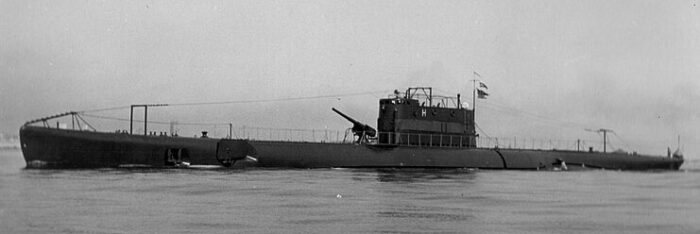
Humaytá was ordered by the Brazilian navy as a modified Balilla, with deep-diving abilities. The standard Balilla design had its diesel and electric motors moved further forward, bow planes were eliminated and there was a different distribution of the ballast tanks. Overall lenght reached 87 m (285 ft 5 in) with less draught at 4 m (13 ft) and a displacement of 1,390 tons surfaced and 1,884 tons submerged, so still quite copparable.
The powerplant differed as she had two Ansaldo diesels and a single electric motor for a total of 4,900 bhp (3,700 kW) and 900 hp (670 kW) respectively, top speed of 18.5 knots (34.3 km/h; 21.3 mph) surfaced, 9.5 knots (17.6 km/h; 10.9 mph) submerged. This showed the type of diesels and modifications required to reach these figures. In a sense, she was a Balilla done right, albeit it is not known if stability was improved, but between the greater lenght and lower draught this is dubious.
Armament still comprised the same six 533 mm torpedo tubes but there was a 4 in (102 mm) deck gun, and she also could carry 16 mines placed in tubes like on Pietro Micca, requiring the extra lenght. She was commissioned on 20 July 1929 and decommissioned on 25 November 1950, seen as a successful submarine and giving Brazil an unprecedented, stealthy reach.
Balilla Trivia
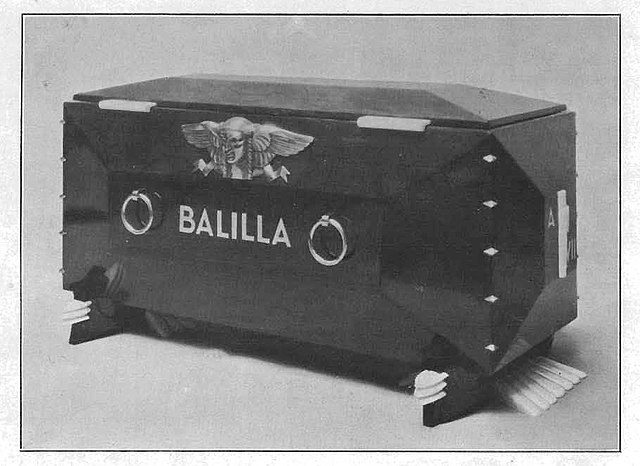
In 1930, famous architect and designer Enrico Del Debbio created the Balilla battle flag chest made of walnut root, with two ebony supports depicting rostra galleys with ivory oars. The coats of arms, handles, hinges and name were also made of ivory. It had diamond-tipped clips, rings and victory head made of gold. This precious chest was presented to the readers of the prestigious magazine Architettura e Arti Decorative in the May 1930 issue. It is on display at the Museo Sacrario delle Bandiere delle Forze Armate al Vittoriano in Rome.
Career of the Balilla class
 Balilla (1927)
Balilla (1927)
Between March and September 1933 Balilla was used in support of Italo Balbo’s transatlantic flight with Millelire and the gunboats Biglieri and Matteucci, meeting a point in the Atlantic under the command of frigate captain Valerio Della Campana and used as radio beacon and communicating weather conditions in advance of Balbo’s aircraft. Her oceanic qualities proved quite satisfactory as well. Once in Chicago, she was visited by Italo Balbo, giving a speech to the crew.
Later she tested containment and overheating issues of diesels despite opposition by the Navy General Staff. She took part clandestinely in the Spanish Civil War, patrolling Spanish waters in search of republican vessels, but made no kill.
On 12 June 1940 she was operating south of Corfu (Lieutenant Commander Michele Morislani) when air attacked by the French, then forced to return to base. On 12 July she left Brindisi to join a line between Alexandr and Cape Krio in Greece, aborted when Lt. Cdr Cesare Girosi fell ill. By 10 August 1940 she cruised off Crete and returned after six days later, no kill. By that point she was seen as worn out and sent like Millelire to the Submarine School of Pola. She was disarmed on 28 April 1941, renamed GR. 247, used as a fuel barge until October 1946, decommissioned and BU.
 Domenico Millelire (1927)
Domenico Millelire (1927)
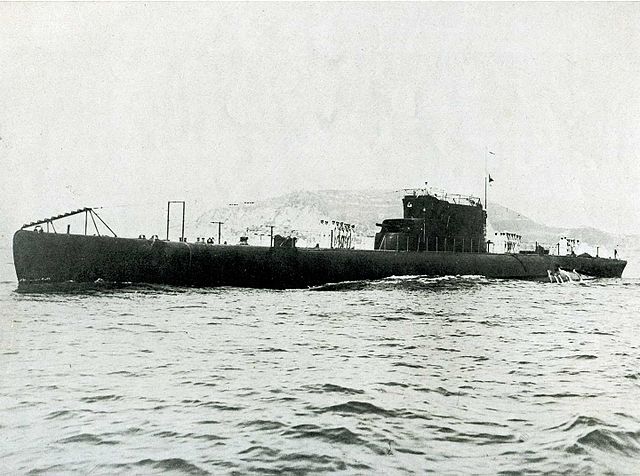
On 20 September 1928 commission ceremony (Lt Cdr Carlo Savio) Milellire received her battle flag from a citizen committee from La Maddalena, led by Anita Susini-Millelire, daughter of Admiral Antonio Susini-Millelire. By March 1929, under command of Lt Cdr Pietro Parenti, she made the first Italian submarine cruise on the Atlantic Ocean. Between March and September 1933, like her sister she took part in the Italo Balbo’s transatlantic flight. While in Chicago she was also visited by Italo Balbo. Like her sister she patrolled during the Spanish Civil War, without results. She carried out 11 war missions over 5,000 miles, had spottings and occasions but made no kills.
In December 1940 she spotted and torpedoed, but missed an unidentified submarine in Strait of Otranto, near Fano. Like her sister she was seen as worn out was assigned to the Submarine School of Pola, until 15 April 1941, the decommissioned, renamed GR. 248 and becoming a loading pontoon and fuel depot. By 13 September 1942 she was towed by the destroyer Saetta with 443 tons of diesel fuel to Palermo, where she was sunk in 1945, recovered and decommissioned in 1946 and purchased in 1948 by Pirelli to become a latex depot, until 1977, when BU. Her engines might have been work out after 20 years but her hull was of supreme quality.
 Antonio Sciesa (1928)
Antonio Sciesa (1928)
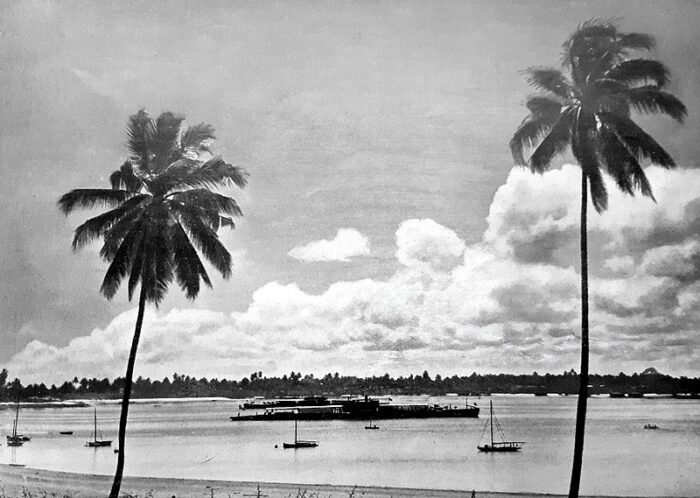
November 1933: Toti and Sciesa at anchor in Dar es Salaam during their African circumnavigation
Antonio Sciesa was completed on 12 April 1929 and 14 September 1933, with Toti, she left La Spezia under capt. Carlo Savio for a cruise via Suez Canal, and to the Red Sea for a full circumnavigation of Africa and back via Gibraltar and back to La Spezia on 25 February 1934. Although used for propaganda this was also a way to verify her performance over long cruises abroad. She stopped at Port Said, Massawa, Aden, Mogadishu, Chisimaio, Mombasa, Zanzibar, Dar es Salaam, Diego Suarez, Lourenço Marques, Durban, Cape Town, Walvis Bay, Lobito, São Tomé, Takoradi, Dakar, Porto Praia, Las Palmas, Gibraltar and Barcelona.
In November 1936 she was sent to support the Francoist forces but made no kill.
By 10-21 June 1940 she made a mission off Cattaro, and on 9 July was in ambush at Cape Passero. On 14 August she left for the North African coast but returned after a breakdown to Brindisi. On 12-21 December she was sent in ambush at the mouth of the Nile, monitoring activity by day submerged with her hydrophone. By March 1941 she was decommissioned in reserve until May 1942 but reactivated on 1 June 1942 under Lt. Raul Galletti and assigned to transport missions to Libya. On 29 June she left Taranto with 64 tons of fuel, 4 tons of supplies for Marsa el Hilal. She was visited by Benito Mussolini. On 24 July she made another run with 71.6 tons of supplies and petrol for Tobruk, unloaded them and back in Apuliae on 3 August. On 19 August she left Taranto with 73 tons of food and ammunition to Benghazi, back on the 26th. There was another mission on 1 October for Benghazi (71.9 tons, including ammunition and Bank of Italy money). On the 6th, a day after unloading, at 21:15, she launched a torpedo against a spotted submarine, surfaced and stationary. The crew heard a bank but the kill was never confirmed.
On 30 October her run was cut short by a breakdown. On 3 November she left with 85 tons of ammunition to Tobruk but while unloading she was under an air raid, hit by three bombs. She had 5 officers and 18 petty officers and sailors killed, and she was beached to avoid sinking.
On 12 November, as Tobruk was about to fall, Sciesa was scuttled by charges and blown up. Bruzzo in 1949 went there to retreived and BU her wreck. In total she performed 12 war missions: 4 offensive, 6 transport (369.5 t supplies) and 2 personal transfer missions.
 Enrico Toti (1928)
Enrico Toti (1928)
Enrico Toti was completed on 19 September, named after a WW1 medaglie d’oro recipient. She took part in the circumnavigation of Africa in 1934 with Sciesa and patrolled off Spain during the Civil War, the only one having close to success: She torpedoes, but missed the 1,011-gross register ton (GRT) cargo ship SS Bétis on 9 August 1937 off Valencia.
In 1940 she was part of the 4th Submarine Group’s 40th Squadron.
On 15 October 1940 off the Gulf of Taranto, she met the T class HMS Triad bound for Malta on 9 October 1940 (Lt.Cdr G.S. Salt) en route for the 1st Submarine Flotilla at Alexandria. Toti was under Lt.cdr Bandino Bandini. He sighted the Triad while surfaced at 01:00, and sounded battle stations, soon the other would also spot her and both altered course and manoeuver for a kill. Italian accounts states Trias was the first to open fire with her deck gun and overshot, also firing a single torpedo, dodged by Toti. Bandini used her own deck gun and even the 13.2 mm (0.52 in) machine guns to chased the deck gun crew, driving them below deck. They passed each within four yards, Triad cutting across her stern. A 1940 account by Dino Buzzati reported the Italian gunner could not depress his gun low enough when they crossed each other and threw his shoes at a British gunner.
Enrico Toti launched a torpedo buyt missed, and Lt. Cdr Salt started to dive when hit by two direct hits from the hard hitting 120 mm gun and she eventually sank stern-first. The action lasted for about 30 to 45 minutes, there were no survivors. Back to port the crew was awarded.
From March to June 1942, Enrico Toti was back in Pola and from there made 93 training sorties. She also was used to carry supplied to North Africa making four round missions to Libya with 194 ton of cargo, but she was decommissioned on 1 April 1943, converted as blockship at Taranto and battery charger.
It was established well after WW2 that “Triad” could have been instead the R-class submarine HMS Rainbow patrolling nearby and which lost contact. Research in 1988 by the RN conclused that Rainbow was sunk in collision with the Italian cargo ship Antonietta Costa 4 October 1940 instead. The sinking of Triad stays the best record of this class.
Read More/Src
Books
Conway’s all the world’s fighting ships 1922-46
Links
digilander.libero.it/carandin/sciesa.htm
marina.difesa.it/ millelire.aspx
regiamarina.net/submarines-class-type-balilla/
trentoincina.it
it.wikipedia.org/ Balilla_(sommergibile_1928)
en.wikipedia.org Balilla-class_submarine
Model Kits
None


 Latest Facebook Entry -
Latest Facebook Entry -  X(Tweeter) Naval Encyclopedia's deck archive
X(Tweeter) Naval Encyclopedia's deck archive Instagram (@navalencyc)
Instagram (@navalencyc)





 French Navy
French Navy Royal Navy
Royal Navy Russian Navy
Russian Navy Armada Espanola
Armada Espanola Austrian Navy
Austrian Navy K.u.K. Kriegsmarine
K.u.K. Kriegsmarine Dansk Marine
Dansk Marine Nautiko Hellenon
Nautiko Hellenon Koninklije Marine 1870
Koninklije Marine 1870 Marinha do Brasil
Marinha do Brasil Osmanlı Donanması
Osmanlı Donanması Marina Do Peru
Marina Do Peru Marinha do Portugal
Marinha do Portugal Regia Marina 1870
Regia Marina 1870 Nihhon Kaigun 1870
Nihhon Kaigun 1870 Preußische Marine 1870
Preußische Marine 1870 Russkiy Flot 1870
Russkiy Flot 1870 Svenska marinen
Svenska marinen Søværnet
Søværnet Union Navy
Union Navy Confederate Navy
Confederate Navy Armada de Argentina
Armada de Argentina Imperial Chinese Navy
Imperial Chinese Navy Marinha do Portugal
Marinha do Portugal Mexico
Mexico Kaiserliche Marine
Kaiserliche Marine 1898 US Navy
1898 US Navy Sovietskiy Flot
Sovietskiy Flot Royal Canadian Navy
Royal Canadian Navy Royal Australian Navy
Royal Australian Navy RNZN Fleet
RNZN Fleet Chinese Navy 1937
Chinese Navy 1937 Kriegsmarine
Kriegsmarine Chilean Navy
Chilean Navy Danish Navy
Danish Navy Finnish Navy
Finnish Navy Hellenic Navy
Hellenic Navy Polish Navy
Polish Navy Romanian Navy
Romanian Navy Turkish Navy
Turkish Navy Royal Yugoslav Navy
Royal Yugoslav Navy Royal Thai Navy
Royal Thai Navy Minor Navies
Minor Navies Albania
Albania Austria
Austria Belgium
Belgium Columbia
Columbia Costa Rica
Costa Rica Cuba
Cuba Czechoslovakia
Czechoslovakia Dominican Republic
Dominican Republic Haiti
Haiti Hungary
Hungary Honduras
Honduras Estonia
Estonia Iceland
Iceland Eire
Eire Equador
Equador Iran
Iran Iraq
Iraq Latvia
Latvia Liberia
Liberia Lithuania
Lithuania Mandchukuo
Mandchukuo Morocco
Morocco Nicaragua
Nicaragua Persia
Persia San Salvador
San Salvador Sarawak
Sarawak Uruguay
Uruguay Venezuela
Venezuela Zanzibar
Zanzibar Warsaw Pact Navies
Warsaw Pact Navies Bulgaria
Bulgaria Hungary
Hungary

 Bundesmarine
Bundesmarine Dutch Navy
Dutch Navy Hellenic Navy
Hellenic Navy Marina Militare
Marina Militare Yugoslav Navy
Yugoslav Navy Chinese Navy
Chinese Navy Indian Navy
Indian Navy Indonesian Navy
Indonesian Navy JMSDF
JMSDF North Korean Navy
North Korean Navy Pakistani Navy
Pakistani Navy Philippines Navy
Philippines Navy ROKN
ROKN Rep. of Singapore Navy
Rep. of Singapore Navy Taiwanese Navy
Taiwanese Navy IDF Navy
IDF Navy Saudi Navy
Saudi Navy Royal New Zealand Navy
Royal New Zealand Navy Egyptian Navy
Egyptian Navy South African Navy
South African Navy






























 Ukrainian Navy
Ukrainian Navy dbodesign
dbodesign